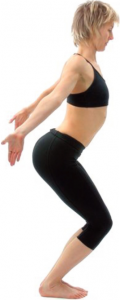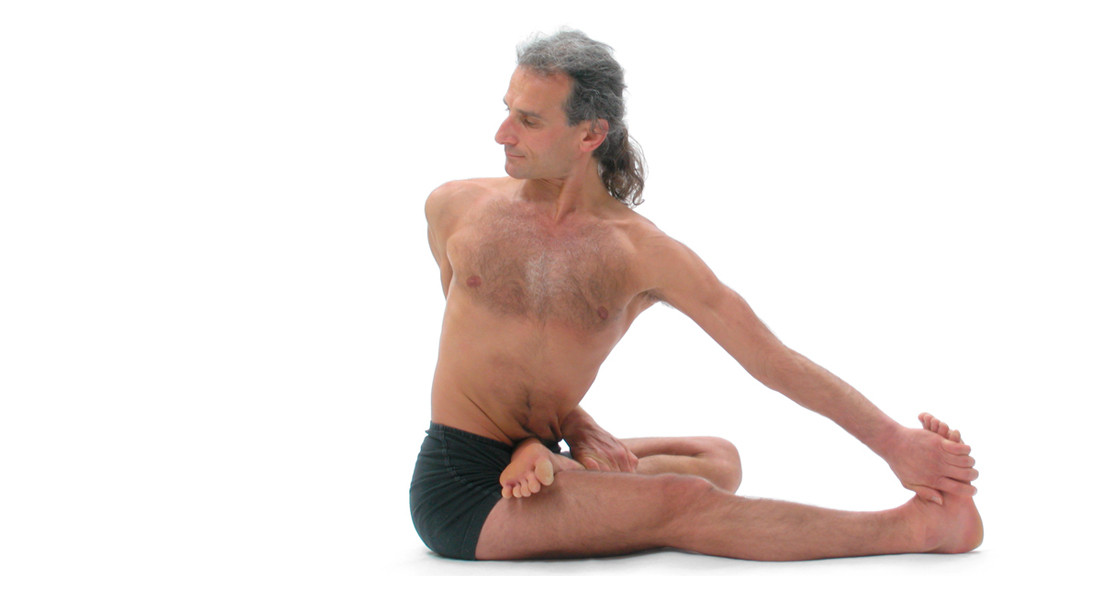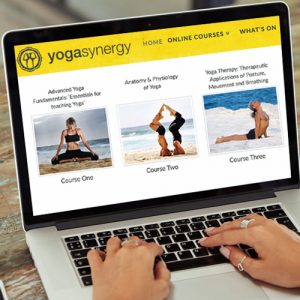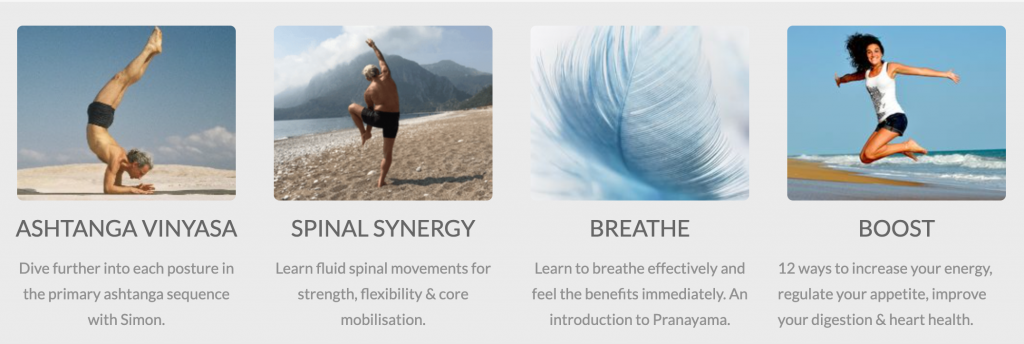Basic Spinal Movements
In this blog I will be examining a sequence of postures done from a simple standing posture that in its simplest form involves moving the trunk and spine into its 8 main ‘pure’ positions.
This is one of the most effective and accessible practices for anyone and can give tremendous release of back and other pain as well as significantly increasing energy levels, improving functional core strength, reducing stress and improving the health of your internal organs.
The key to effective spinal movements and core stabilisation is to always be able to breathe into the abdomen using the diaphragm and always initiate each spinal movement from the region of the navel and the ‘navel spine’ (L4-L5).
Once you release the muscles of forced abdominal exhalation that many people habitually use to ‘engage their core’ using abdominal breathing or at least the feeling that you can breathe into the abdomen, then the spine is free to move from its base at the ‘navel spine’ (L4-L5) near the sacrum.
Once you move your spine using the internal forces (trunk muscles) rather than external forces such as gravity, the use of another limb or momentum, then this will create tremendous core strength. In other words to move the spine you must initiate movement from the core with a sense that the core feels relaxed enough to breathe there. At this point the abdomen may feel quite soft to touch. However, once the movement begins the abdomen begins to firm because it is moving.
This is an important key to functional mobile core strength and a pain free back. This is also a great preparation to many advanced postures including many advanced arm balances and backward-bending postures.

Figure 1: The list of main postures in the spinal movements sequence is as follows:
1. ‘Complete spinal lengthening posture’ (Urdhva hasta merudanda
tadâsana)
2. ‘Back spinal lengthening posture’ (Pascima merudanda tadâsana)
3. ‘Front spinal lengthening posture’ (Purva merudanda tadâsana)
4. ‘Side spinal lengthening posture’ (Parsva merudanda tadâsana) (left and right side)
5. ‘Twisted spinal lengthening posture (Parivrtta merudanda tadâsana) (left and right side)
This simple but effective spinal movements sequence forms the basis of the YogaSynergy Fundamentals Sequence as taught in our 120 hour online course
A. Structure of the ‘Spinal Movements Sequence’ (Meru danda tada vinyâsa):
The eight main movements of the spine that are practiced in this sequence (vinyâsa) are actually 4 opposing pairs of movements. These are:
1a. ‘Shortening’ (Spinal compression) (standing with a ‘neutral spine’)
1b. ‘Lengthening’ (Spinal traction) (standing with a straight spine)
2a. ‘Forward bending’ (Spinal flexion) (lengthening the back of the body)
2b. ‘Backward bending’ (Spinal extension) (lengthening the front of the body)
3a, 3b. ‘Sideways bending’ to right and left (Spinal lateral flexion) and
4a, 4b. ‘Twisting’ (Spinal axial rotation) to right and to left side
The purpose of this smooth flowing and dynamic linked sequence of postures (vinyâsa) is to enliven the spine by moving each vertebra. This sequence acts directly on the spine by guiding it to move with its own volition. The shoulders and hips are used to assist the spine in order to utilise and enhance the connections within the body. The actual list of main postures in this sequence is as follows:
- ‘Complete spinal lengthening posture’ (Urdhva hasta merudanda tadâsana)
- ‘Back spinal lengthening posture’ (Pascima merudanda tadâsana)
- ‘Front spinal lengthening posture’ (Purva merudanda tadâsana)
- ‘Side spinal lengthening posture’ (Parsva merudanda tadâsana) (left and right side)
- ‘Twisted spinal lengthening posture (Parivrtta merudanda tadâsana) (left and right side)
B. Anatomical (physical) purpose of the ‘Spinal Movements Sequence’ (Meru danda tada vinyâsa):
On an anatomical or physical level if this sequence is applied correctly all of the inter-vertebral joints of the spine can become mobile, the bones can become stronger, and the muscles that move the spine (the true ‘core’ muscles) can become very strong.
C. Physiological (energetic) purpose of the ‘Spinal Movements Sequence’ (Meru danda tada vinyâsa): On a physiological or energetic level the spinal cord and the nerves of the spine are lengthened (tractioned), which enhances nerve conduction and the flow of energy and information via the nervous system. By learning to actively move the spine one vertebra at a time from the base of the spine upwards, blood is effectively moved through the valveless veins of the spine. Active spinal movements in conjunction with natural diaphragmatic breathing can stimulate the reciprocal spinal nerve reflex that allow the trunk to become strong, flexible and relaxed while increasing circulation of blood without needing to make the heart beat faster.
D. Context of the ‘Spinal Movements Sequence’ (Meru danda tada vinyâsa): This sequence introduces the ‘pure’ active spinal movements i.e. pure flexion or extension, pure lateral flexion or pure axial rotation but no combined movements such as extension plus lateral flexion. Once these ‘pure’ spinal movements in this sequence can be safely and effectively mastered without confounding influences of the arms and legs, they can be then understood in more complex combinations such as spinal twisting combined with forward bending as seen in more complex postures.
E. Contraindications and modifications for the ‘Spinal Movements Sequence’ (Meru danda tada vinyâsa): Contraindications for this sequence include the following cautions:
- If you are prone to back or spinal problems do not bend the spine in any way that causes pain. Be particularly careful to emphasise movement in the spinal joints more from where there is stiffness and less from where there is flexibility. A good rule for bending backwards (spinal extension) is to try to lengthen the front of the body rather than to shorten the back of the body. Similarly avoid creasing the skin of your back if you can as this is usually associated with spinal compression. Also avoid excessive movement at the hip joints, as this is usually associated with excessive movement around the weakest most flexible parts of the lower back (lumbar spine). Try to lengthen (traction) the spine before you ‘bend’ it any direction. Also, try to move the spine one vertebra at time from the base upwards, i.e. move first from the 5th lumbar vertebra (L5), then move the 4th lumbar vertebra (L4), then the 3rd lumbar vertebra (L3) etc. Moving the spine one vertebra at a time helps develop core strength, increase spinal flexibility and improve blood flow through the spine and trunk.
- If you are prone to knee problems do not bend the knees more than half way if it is uncomfortable for the knees or if you can’t come back up from a squat position slowly and with control.
- If you are prone to shoulder problems do not raise the arms above shoulder height if it is causes pain or discomfort especially in the shoulders, but also in the lower back or anywhere else.
- If you are prone to neck problems ensure that when you lift your head you move the throat forward as you lift the chin up; but do not raise your head if it causes pain in the head, neck or back, or if it makes you lose your balance.
- If you are prone to cardiovascular problems do not raise the arms above shoulders if you have a cardiovascular problem that can be irritated by raising the arms.
F. Instructions and notes on how to execute the ‘Spinal Movements Sequence’ (Meru danda tada vinyâsa): This sequence of postures (vinyâsa) actively mobilises (moves) the spine through the 4 main movements, lengthening and shorting, forward and backwards bending, sideways bending and twisting. Each movement should begin from navel and the ‘navel spine’ (L4-L5) by relaxing, moving and breathing from that part of the body first in order to enhance the connections within the body. This sequence acts on the spine, arms and legs. The following postures (âsanas) and gestures (mudrâs) form the sequence (vinyâsa):
‘Complete spinal lengthening posture’ (Urdhva hasta meru danda tadâsana) (Figure 2)
- Bring down the arms and lengthen the back of your wrists and fingers.
- Push your sitting bones down and forward, and keep the top of your hips backwards.
- Bend the elbows and bring the back of the hands together then take the arms forwards and up.
- Lengthen your spine from the navel to lift your shoulders, elbows, wrists then hands.
- Raise your heels.
- Lengthen your spine by relaxing your trunk muscles, then lifting your arms higher and lowering your tailbone.
- Breathe naturally into your abdomen.
‘Back spinal lengthening posture’ (Pascima meru danda tadâsana) (Figure 3)
- Bend your knees and bring down your arms.
- Turn your shoulders inwards and lengthen the back of the body.
- Lengthen your wrists and fingers to create the ‘Large intestine gesture’ (Atanu puritat mudrâ).
- Bring your sitting bones under your shoulders.
- Push your sitting bones down and forward, and keep the top of your hips backwards.
- Move the navel (and the navel spine) forward and down and bend the spine into a smooth forward bend one vertebra at a time.
- Lengthen the back of your trunk without shortening the front.
- Breathe into the abdomen.
- Stay here, or raise the heels.
- Stay here, or bend the knees further.
- Ideally your abdomen should feel firm at the front but soft in the sides and in your back.
- It is important to check that you are relaxed enough that you can breathe naturally into the abdomen.
- Also check your neck is free and your fingers are lengthened but they are free enough to move.

‘Front spinal lengthening posture’ (Purva meru danda tadâsana) (Figure 4)
- Come back up by straightening your knees, then again bend your knees.
- Turn the shoulders outwards, open the palms to create the ‘Lung gesture’ (Kloman mudrâ).
- Push your sitting bones down and forward, and keep the top of your hips backwards.
- Move the navel (and the navel spine) forwards and upwards and bend the spine into a smooth backward bend one vertebra at a time.
- Lengthen the front of your trunk without shortening the back (try not to let any skin crease on your back when you bend backwards.
- Breathe into the abdomen.
- Stay here, or raise the heels.
- Stay here, or bend the knees further.
- Ideally your abdomen should feel firm at the front but soft in the sides and in your back.
‘Side spinal lengthening posture’ (Parsva meru danda tadâsana) (left and right side) (Figure 5)
- Move the hips back to the midline and lengthen the back of the body.
- Come back up by straightening your knees and lowering your heels.
- Bend your elbows to create the ‘Heart gesture’ (Buddhizuddhi mudrâ) and once again lengthen the back of the body.
- Move your navel to the left side and upwards to lengthen the left side of the body.
- Move one vertebra at a time as you breathe into your right abdomen.
- Lengthen your left side of the trunk and lift your left shoulder and elbow without shortening the right side of your trunk.
- Stay, or take your left arm forwards and upwards and take your right arm down.
- Push the right sitting bone forward and up.
- Move the hips back to the midline and lengthen the back of the body.
- Move your navel to the right side and upwards to lengthen the right side of the body.
- Move one vertebra at a time as you breathe into your right abdomen.
- Lengthen your right side of the trunk and lift your right shoulder and elbow without shortening the left side of your trunk.
- Stay, or take your right arm forwards and upwards and take your left arm down.
Twisted spinal lengthening posture’ (Parivrtta meru danda tadâsana) (left and right side) (Figure 6)
- Turn your navel to the right side, then turn your ribs, then your chest, and then your shoulders and elbows.
- Breathe into the abdomen.
- Straighten the arms at the elbows.
- Look over the left shoulder with your left ear slightly lifted.
- Relax your throat, tongue, jaw, lips and eyes.
- Bend the elbows and come back to the middle with the navel first and the shoulders last.
- Turn your navel to the left side, then turn your ribs, then your chest, and then your shoulders and elbows.
- Breathe into the abdomen.
- Straighten the arms at the elbows.
- Look over the right shoulder with your right ear slightly lifted.
- Relax your throat, tongue, jaw, lips and eyes.
- Bend the elbows and come back to the middle with the navel first and the shoulders last.
- Bring down the arms and come to the front of your mat with your big toes touching and the heels apart. Relax.
Finish with the ‘Complete spinal lengthening posture’ (Urdhva hasta meru danda tadâsana) (Figure 2)
 Spinal Movements Downloadable Video
Spinal Movements Downloadable Video
Discover how to best move your spine to increase circulation, generate energy, relieve back pain, increase core strength and become more mobile. Purchase once as a download and get unlimited access to the streaming video.
Below is a short low resolution segment of the Yoga Synergy Spinal Movements Sequence Video by Simon Borg-Olivier. This short sequence forms the basis of what is described above. More complex as well as simpler versions of this sequence are also taught on this downloadable video.
Here is a 28 minute spinal movements video you can practice to – it is a low resolution version of part of the Yoga Synergy Spinal Movements Video. You can obtain a full downloadable version of this video here.
This practice is so accessible that I successfully taught it over 1000 people at at time with great results at International Conferences and elsewhere. This 28 minute video of a series of spinal movement sequences has no verbal instructions, which helps you not to over-think. It can be a very effective moving meditation that makes your body energised strong and pain free.
If you attempt any of these sequences then it is important to only do what feels good and to not over-stretch, over-tense or overt-breathe.
Simple guidelines to attempt part or all of this sequence:
- make your aim to simply lengthen and relax
- move your spine starting from the region corresponding to the navel
- move each vertebrae one at a time
- always check your fingers and toes can move, your neck can move and you abdomen (diaphragm) can breathe and that you are feeling calm
This practice should ideally make you feel warm yet without the heart racing and it gives you energy rather than taking it from you.
Video Times (minutes and seconds) of the various spinal movements sequences in this youtube video:
A. 00m 00s: Pure spinal movements (PURE SPINE: lengthen, lengthen the back (forward bend), lengthen the front (backward bend), lengthen the left side (left side-bend), lengthen the right side (right side-bend), twist to right side, twist to left side)
B. 01m 24s: Pure spinal movements in different LEG POSTURES
C. 10m 54s: combined spinal movements (BEACH BALL: side-bend plus twisting) (like turning a large beach ball)
D. 14m 12s: Combined spinal movements into one arm (PLATE SPIRAL (like holding a plate in your hand to turn it in spirals): Starting with right hand: twist left (move navel to left), lengthen the front (move navel forward and upwards), twist right (rotate navel to right side), lengthen the right side (move navel to right side and upwards), lengthen the back (move navel forwards and downwards then softly backwards and upwards), lengthen the left side (move navel to left side and upwards)
E. 15m 44s: Stepping movements with the hips
F. 16m 25s: PLATE SPIRAL with LEG POSTURES SEQUENCE
G. 19m 38s: FREE FORM SPINAL YOGA DANCE (Optional – only smooth flowing, no jagged movements of arms legs or spine , so safely at your own pace)
H. 21m 19s: Cool down PLATE SPIRAL with LEG POSTURES SEQUENCE
I. 24m 27s: Cool down PURE SPINE LEG POSTURE SEQUENCE
J. 25m 20s: Cool down PURE SPINE SEATED SEQUENCE
Try a FREE Lecture
To learn more about this material please join one of our online courses. Try a FREE Lecture from any of our courses.
Advanced Yoga Fundamentals: Essentials for Teaching Yoga
Blending the science of physiotherapy and traditional yoga, you will learn the practical application of our ‘Anatomy and Physiology of Yoga’ course. For most people this is a more practical and more accessible course than ‘Anatomy and Physiology of Yoga’ and we recommend you do it first.
Our online course ‘Yoga Fundamentals:Essentials of Teacher Training: is a good complementary course for the ‘Anatomy and Physiology of Yoga’ Course as it’s not enough to know where your muscles and bones are, you also have to know what to do with them!
This is the public version of the award winning RMIT university course.
Our online course ‘Anatomy and Physiology of Yoga’ compares and contrasts the Eastern and Western approach to exercise and exercise therapy. This course also tries to explain the anatomy and physiology of yoga and other related eastern exercises (such as martial arts of China and India) using modern scientific language that is still accessible to the lay person.
Skill Building Online Courses
MORE POSTS BY SIMON BORG-OLIVIER
Share this Post








Comments 4
well said, well written, thank you
Wonderfully written and great information. Thank you!
fabulous information
fabulous info for back-pain free